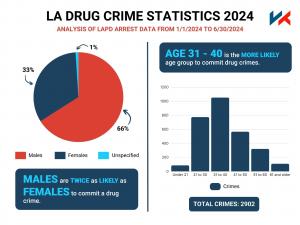Expanding the sand table of the future: a multi-user rendering technique to coordinate viewing.
USA, September 7, 2023/EINPresswire.com/ — Consider a situation in training or in combat where it is the commander’s intent to get all participants on ‘the same sheet of music at the same time’. In a 25 August 2023 article, TPMI discussed its patented technology (US 11,207,133) to allow markup of a virtual sand table constructed from the One World Terrain using tangible tools. In a 31 August 2023 article, TPMI discussed further patented technology (US 11,417,071) to enable a digital transformation of the virtual battlefield using these tangible tools.
Now, consider Lieutenant Kathy and Colonel Bob. The experienced Colonel is viewing a first target from a Northeast direction. Then, he rotates the virtual sand table and moves his position to view a second target from a South direction at a closer in distance. The Colonel is talking fast. The Colonel is not great at explaining things. The Lieutenant cannot keep up!
Thankfully, TPMI’s patented technology (US Patent 11,574,435) expands on the ‘133 patent and ‘071 patent and enables coordinating viewing for multiple users. The ‘435 patented technology provides 3D rendering of the virtual sand table for the LT based on the LT’s viewing parameters so the LT can fully appreciate target #1 while the Colonel is talking about target #1. Then, when the Colonel manipulates his sand table to view target #2, the ‘435 patented process rotates and moves the LT’s sand table so that she can easily follow along and keep up!
The ‘435 patent is a critical advancement for the US Army. Consider four scenarios.
Scenario #1 – Unit Training. Consider a training situation wherein a unit is rehearsing for a potential battle associated with an upcoming deployment. If the ‘435 patented technology is integrated into the IVAS, it would enable a commander the ability to use a virtual sand table created from the One World Terrain (OWT) to enable the unit to practice movements along the planned route of approach. As the route changes azimuth, the commander could reorient the terrain mass to the new direction of march and each of the participants would then see the terrain from the new direction they would be facing. As the unit neared the objective, the ‘435 patent discusses selection of a precise subset of data (i.e., the objective area) for discussing and practicing specific actions by each participant.
Scenario # 2 – Combined Arms Operations. Suppose in a real-world conflict, the enemy was using drones to locate and track force movements and then engage the force with artillery in near real time. Under these conditions, the unit commander would need to coordinate timing of the unit movement with counter battery fires. As the unit neared the objective the fire would need to be shifted. The Infantry and Artillery being on the same sheet of music at the same time, enabled by ‘435, would optimize the conduct of the battle.
Scenario # 3 – Joint Operations. Suppose a higher-level unit is coordinating with the Air Force for an upcoming operation. The plan could include the artillery suppressing enemy air defenses followed by close air support fires on selected targets. Flight angles could be selected to preclude any chance of fratricide and still maximize Joint effectiveness. All of these planning activities would be enhanced through application of ‘435 seeing how all the Joint activities would unfold over time. The Army could orient the OWT as the Army wants the Air Force to visualize battle from the Army perspective and likewise the Air Force could give their perspective.
Scenario # 4 Multinational Operations. Clearly in multinational operations there are many challenges: language barriers, differing weapons systems, unit structures, and training levels, logistics, etc. Each national participant seeing how they fit and contribute to the entire operation could be much better harmonized through application of ‘435 into IVAS and applied across the multinational planners.
Integrating TPMI’s ‘133, ‘071 and ‘435 patented technologies into the IVAS is an important step towards enabling Army personnel to have the ability to interact with the OWT in: unit, combined arms, joint, and multinational training and operations. TPMI aims to work with PEO Soldier and PEO STRI to integrate these novel technologies into the IVAS.
About the author: Dr. Robert Douglas is one of the few known retired Infantrymen who have 80+ USPTO awarded patents. This article discusses only a small subset of the vast array of technologies in the ‘133, ‘071 and ‘435 patents. This was the 26th patent discussed in this series of articles that is relevant toward improving the military/ IVAS goggles. Although only one idea is selected from each patent for the associated article, in fact, each patent includes many relevant ideas. More to come on Augmented Reality (AR), Mixed Reality (MR), and Virtual Reality (VR).
Dr. Robert Douglas
TPMI
email us here
Visit us on social media:
Twitter
![]()
Originally published at https://www.einpresswire.com/article/654280869/a-26th-major-improvement-to-the-integrated-visual-augmentation-system




